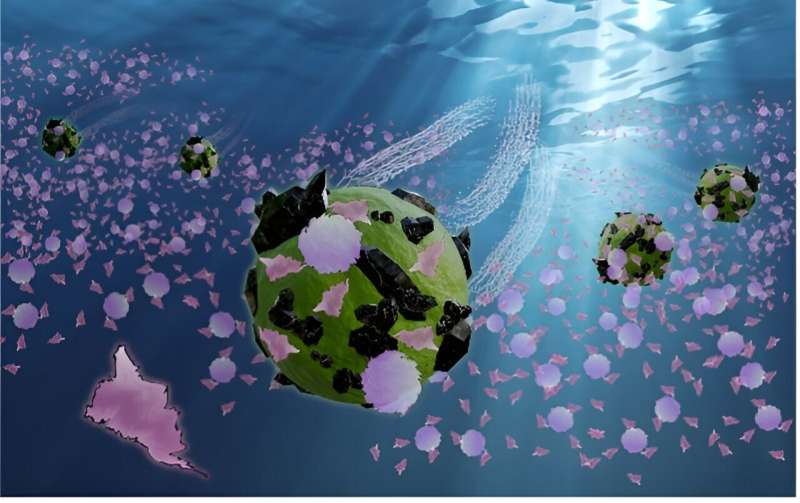November 25, 2023 report
This article has been reviewed according to Science X's editorial process and policies. Editors have highlighted the following attributes while ensuring the content's credibility:
fact-checked
trusted source
proofread
Saturday Citations: Lead, microplastics and coal on our filthy planet—plus, faster-charging lithium-ion batteries

This week, we reported on new developments in lithium-ion batteries, and a real industrial pollution hat trick with stories on coal, lead and microplastics.
Batteries changed
In a display of Monday-morning quarterbacking of a game that had actually been played decades before, the Nobel committee awarded the 2019 Nobel Prize in Chemistry to the developers of the lithium-ion battery, long after the technology had already refashioned the technological face of the planet and like 40 years after Stanley Whittingham first developed his innovative lithium-ion-intercalating cathode. It's like the Academy of Motion Picture Arts and Sciences deciding in 2023 to give the award for best picture to "Goodfellas." Too little, too late, AMPAS, nobody will ever forget that "Dances With Wolves" faceplant.
But OK! Now that we've had rechargeable batteries in literally every device for 25 years, we've moved on to the goal of charging up those batteries even faster. Researchers at Huazhong University of Technology in China have proposed a new, fast-charging battery design that incorporates a graphite-based material. In tests, the new design sped up the charging time while preserving capacity over thousands of charge cycles. Their breakthrough could conceivably attract attention from Stockholm-based judges in as little as four decades.
Cleanup remunerative
Humans have a long historical track record of really messing themselves up with lead poisoning, including lead tableware in ancient Rome, lead-based cosmetics in 18th-century Europe, the globally widespread use of lead-based paint, and the absolute steroid-popping granddaddy of all mass-poisoning events, one that affected the brains and health of everyone on the planet born between 1921 and 1975: the burning of leaded gasoline. And it was for such a hilariously dumb reason—to make engines run more quietly.
Well, they phased out leaded gasoline as the use of catalytic converters in cars became widespread. Global atmospheric lead levels dropped, and the generations born after 1985 or so will likely have two or three more IQ points than previous generations. A new study calculates that the elimination of airborne lead has resulted in an average increase in lifetime earnings for U.S. workers of 3.5%, or $21,400 for the average worker. The authors of the study report that the total earnings impact of the Clean Air Act is about $4.23 trillion and continues to return a national dividend of more than 1% each year.
Janitors miniscule
Microplastic pollution has been found in the remotest parts of the earth, including the poles and in deep ocean trenches, and represents a pervasive threat to life and health. Researchers from Brno University of Technology and Mender University in the Czech Republic have developed controllable biohybrid microrobots that can remove micro- and nanoplastics from water without causing further pollution. Their robots consist of algae and environmentally friendly iron nanoparticles.
They explain that the robots are precisely controlled by an external magnetic field. The robots have a negative surface charge that electrostatically attracts negatively-charged micro- and nanoplastics; in their study, the researchers controlled the robots with high levels of precision and removed most of the microplastics from the water tanks in which they were tested. Deriving from algae, the microbots can be introduced into natural water bodies without contaminating them.
Technology anachronistic
In the 1950s, American futurists postulated a world powered by nuclear energy, which could theoretically produce electricity too cheap to meter. Instead, we experienced a timeline in which Victorian coal-fired technology dominated the energy sector and blanketed industrial zones in a haze that would have seemed homey to Charles Dickens and probably inspired him to compose another book about coughing orphans.
Exposure to fine particulate air pollutants from coal-fired power plants has been associated with double the risk of mortality compared to PM2.5 pollutants from other sources, according to a George Mason University study. On the one hand, 460,000 U.S. deaths were attributable to PM2.5 emissions from coal plants between 1999 and 2020. On the other hand, deaths decreased over the study period by 95% due to the closure of coal-burning power plants and the installation of scrubbers in working plants; deaths were highest between 1999 and 2007.
© 2023 Science X Network





















